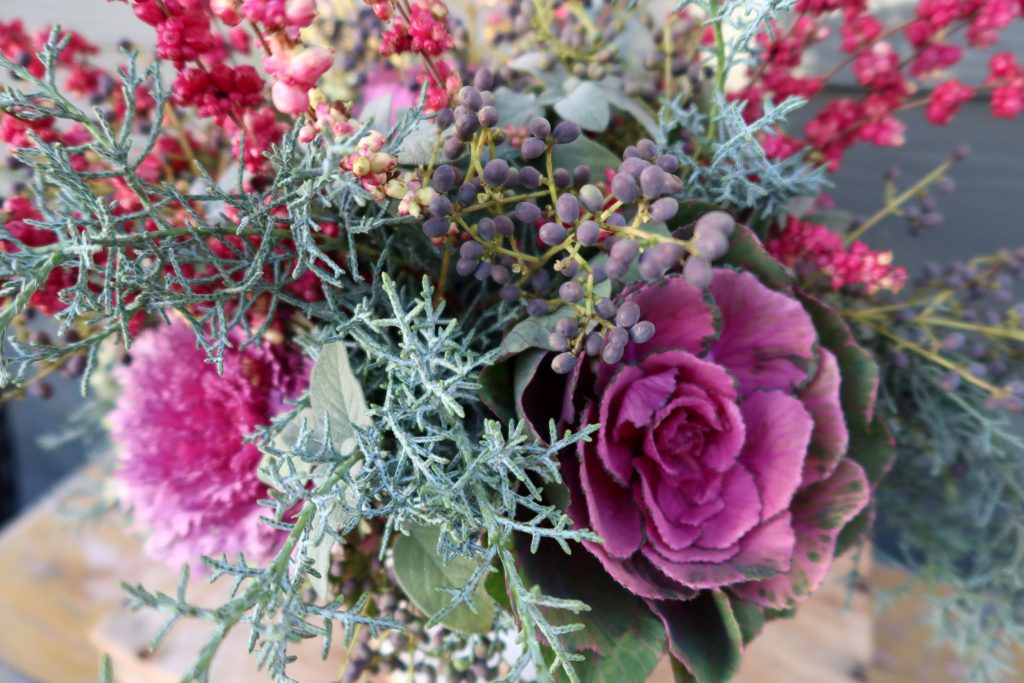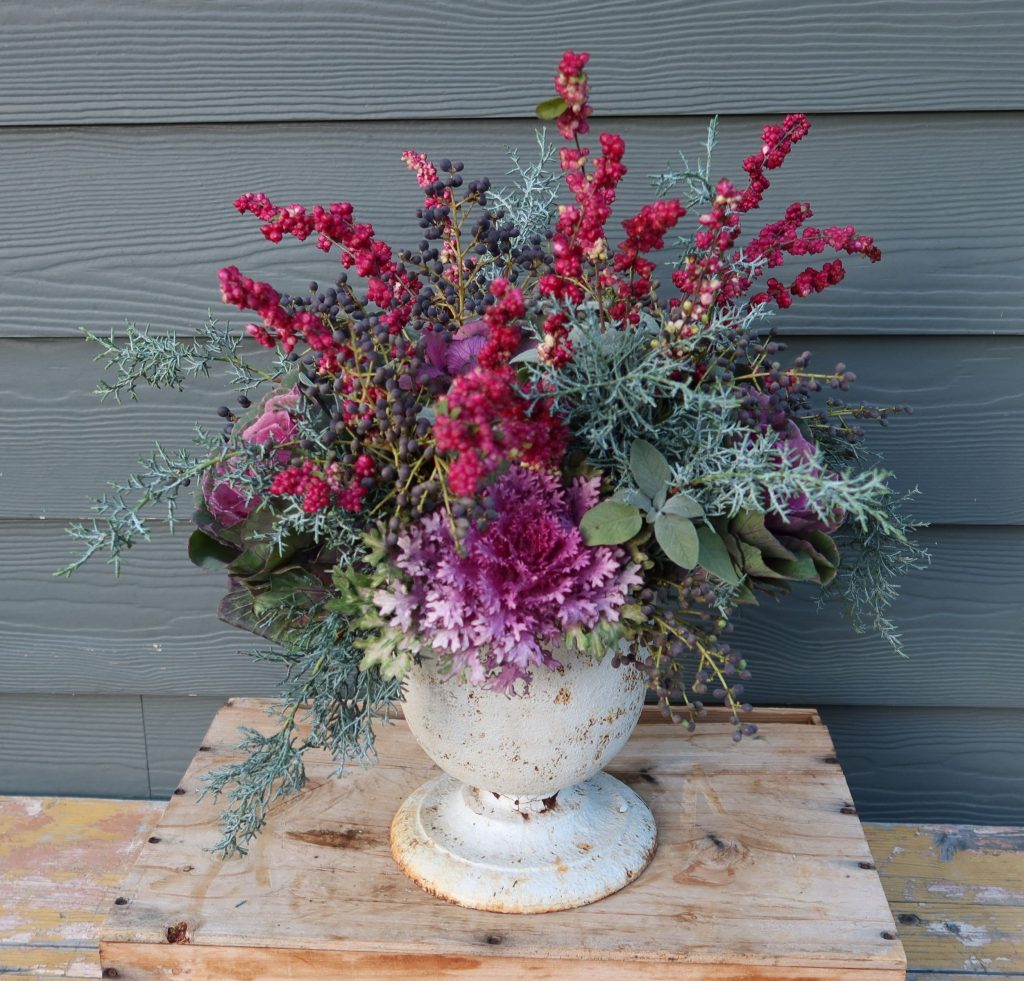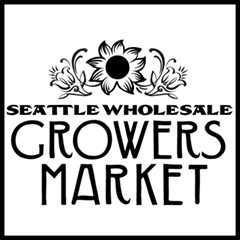Week 49, as we revisit the 10-year anniversary of the book Slow Flowers
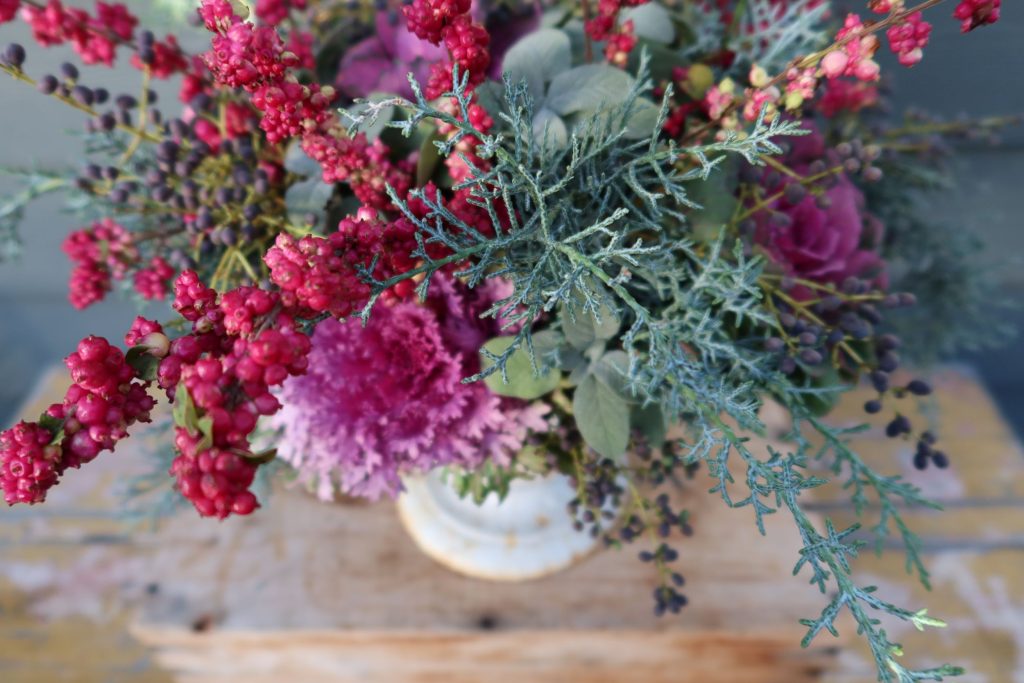
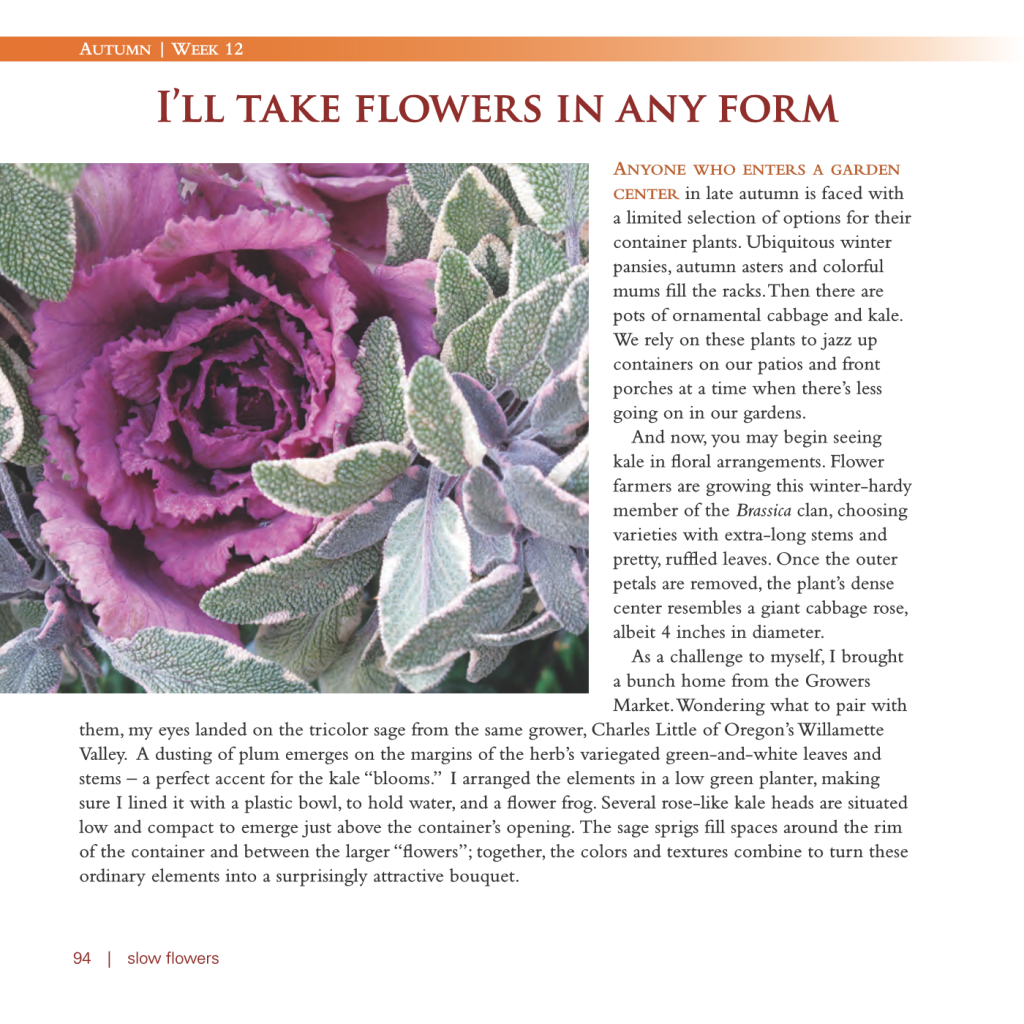
Florists seem to have a love-hate relationship with flowering kale, winter-hardy members of the Brassica clan that resemble a giant cabbage rose measuring 4- to 5-inches in diameter. It’s a plant that we’ve seen in nursery and grocery displays this time of year, and flower farmers have been growing the longer-stemmed forms for market bouquets.
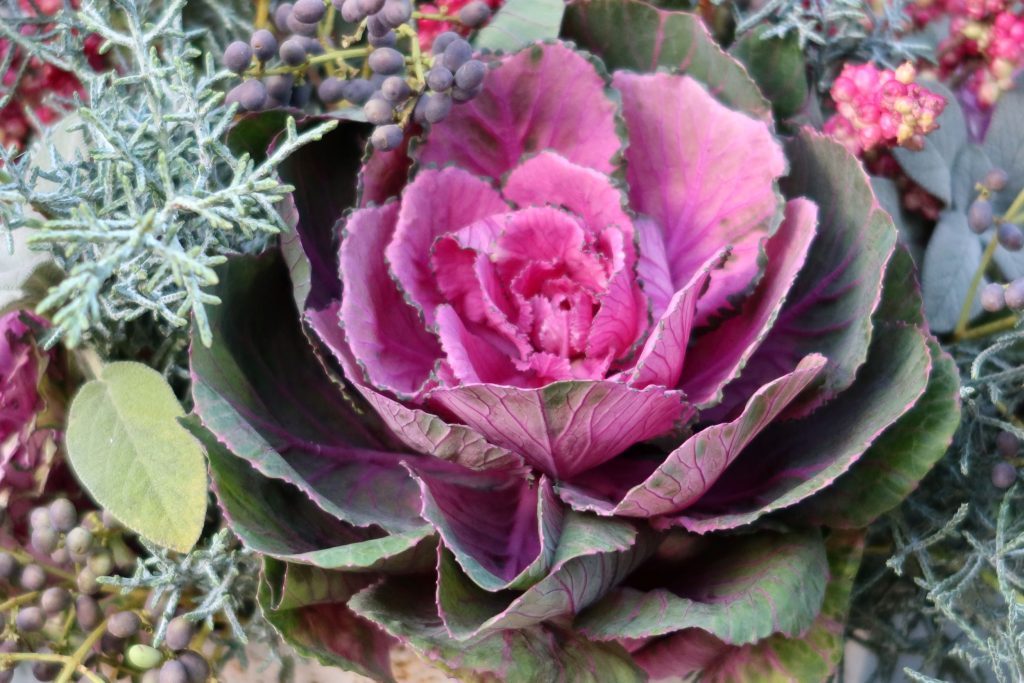
In my opinion, the “love” part is its size — flowering kale fulfills the “focal flower” role in a bouquet or arrangement. I suspect that the “hate” part has to do with the fact that we’re seeing ornamental kale and cabbage everywhere (up until holiday decorations take over), but also the smell, which some people complain is similar to, well, cooked cabbage.
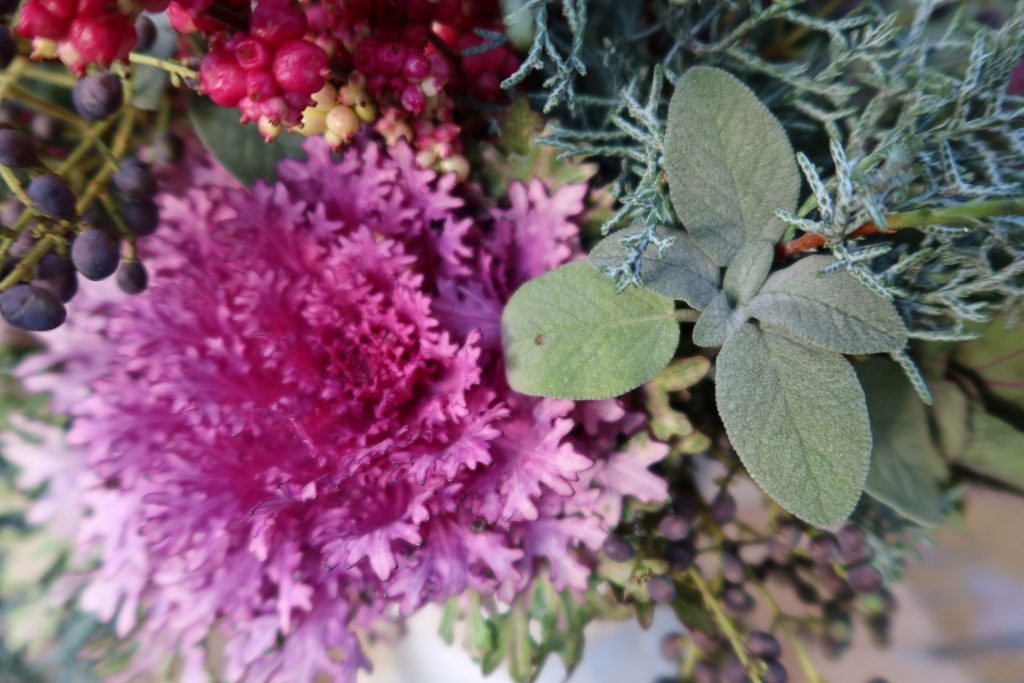
But hey, I’m on a mission to showcase what’s local and seasonal in the moment and here’s what I selected for the NEW version of this kale-and-sage design:
6 stems of lacy and smooth magenta-purple flowering kale, grown by Ojeda Farms
15 stems of ‘Hancock’ snowberry (Symphoricarpos x chenaultii ‘Hancock’), grown by Jello Mold Farm
10 stems of ‘Cypress Blue Ice’ Arizona cypress, harvested by Leo’s Trees
Privet berry sprigs, sourced from California at Seattle Wholesale Growers Market
10 stems of Berggarten sage (Salvia officinalis ‘Berggarten’), clipped from the Slow Flowers Cutting Garden
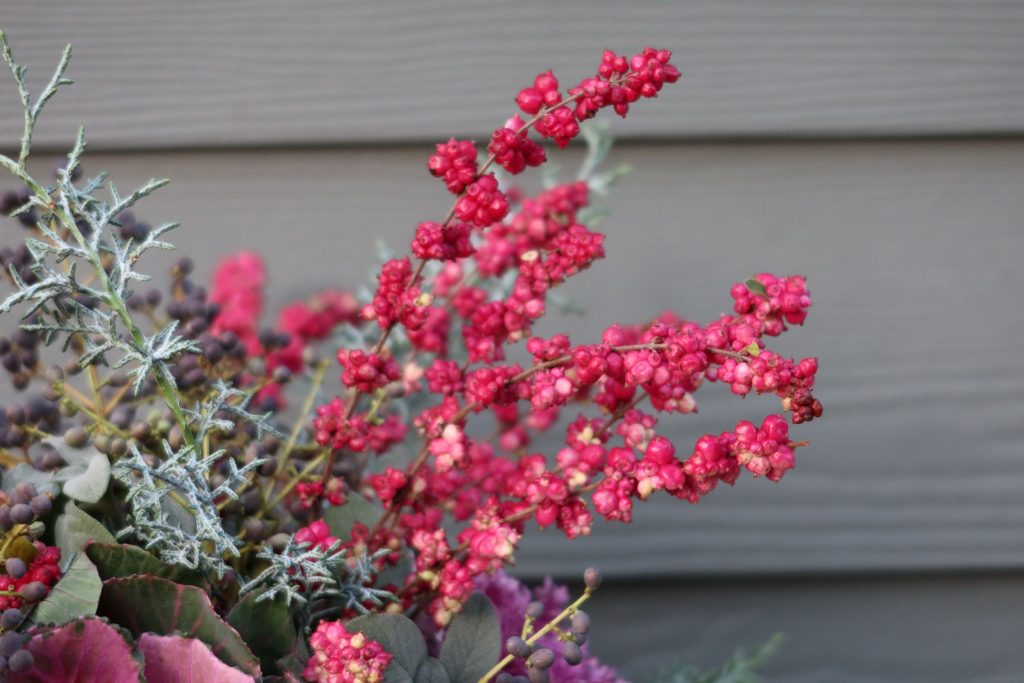
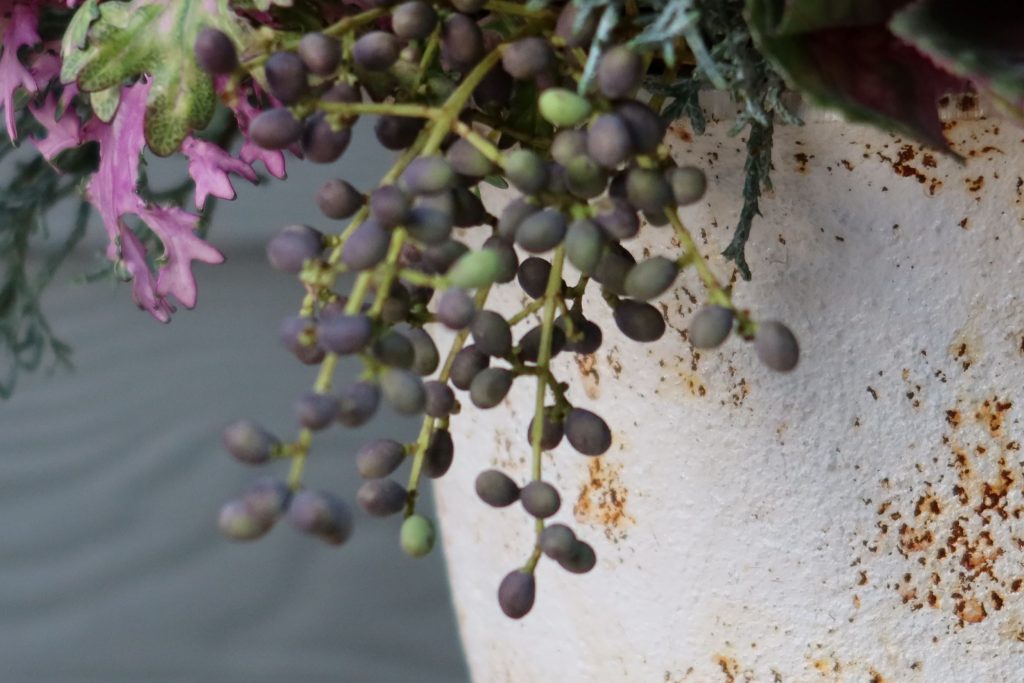
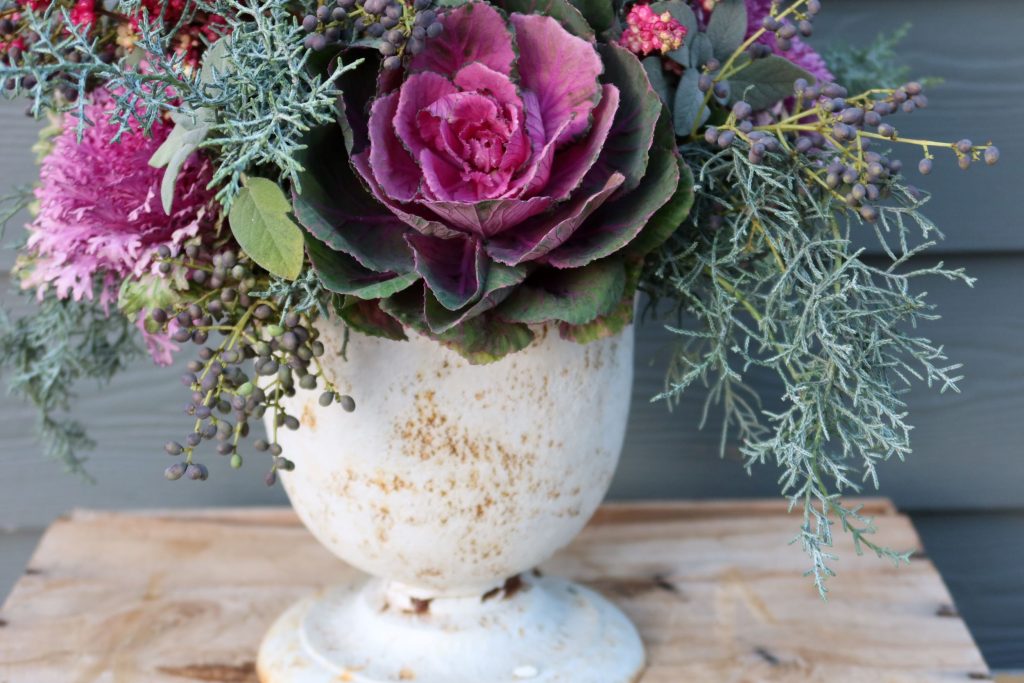
I wanted to elevate the composition, and the Hancock snowberry and blue cypress provided necessary height and sprays of color and form. I couldn’t find the tricolored sage (grown by Charles Little & Co. back in 2011 when I was creating Slow Flowers), so I foraged some sprigs of the Berggarten sage in my backyard.
The Hancock snowberry is a huge gift to Slow Flowers florists this time of year. Thank you, Diane Szukovathy and Dennis Westphall of Jello Mold Farm, for putting in the work to develop this crop on your farm — and to bring it to the marketplace. It’s stunning! The first time I saw this cut, I thought it was a type of beautyberry!
